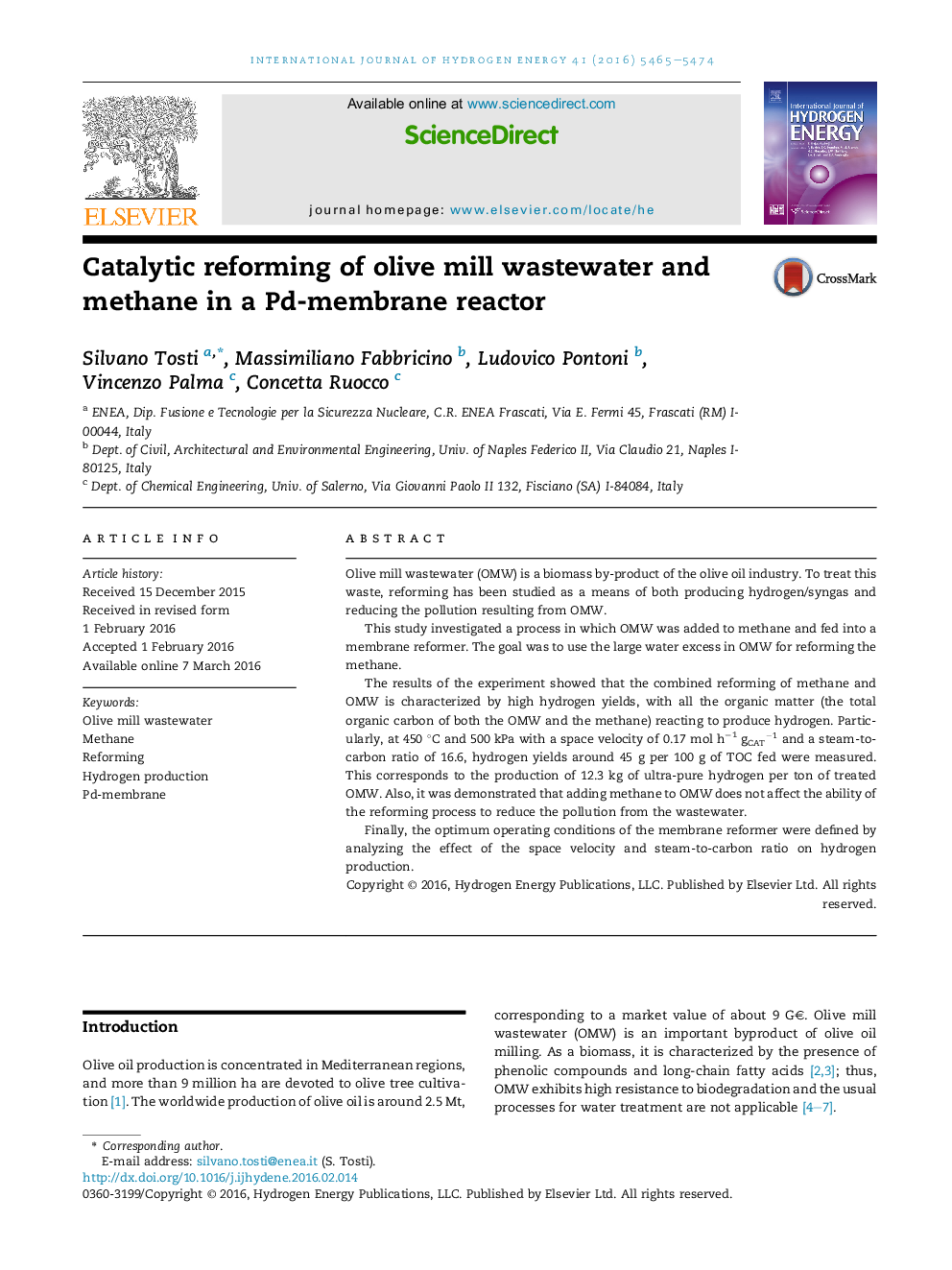| Article ID | Journal | Published Year | Pages | File Type |
|---|---|---|---|---|
| 1268787 | International Journal of Hydrogen Energy | 2016 | 10 Pages |
•Hydrogen is produced in a membrane reactor via reforming of olive mil wastewater and methane.•The membrane reactor consists of a Pd–Ag dense tube filled with a Pt, Rh and Pd based catalyst.•Hydrogen yields of 45 wt% were obtained at 450 °C and 500 kPa.•Over 12 kg of hydrogen were produced per ton of olive mil wastewater.
Olive mill wastewater (OMW) is a biomass by-product of the olive oil industry. To treat this waste, reforming has been studied as a means of both producing hydrogen/syngas and reducing the pollution resulting from OMW.This study investigated a process in which OMW was added to methane and fed into a membrane reformer. The goal was to use the large water excess in OMW for reforming the methane.The results of the experiment showed that the combined reforming of methane and OMW is characterized by high hydrogen yields, with all the organic matter (the total organic carbon of both the OMW and the methane) reacting to produce hydrogen. Particularly, at 450 °C and 500 kPa with a space velocity of 0.17 mol h−1 gCAT−1gCAT−1 and a steam-to-carbon ratio of 16.6, hydrogen yields around 45 g per 100 g of TOC fed were measured. This corresponds to the production of 12.3 kg of ultra-pure hydrogen per ton of treated OMW. Also, it was demonstrated that adding methane to OMW does not affect the ability of the reforming process to reduce the pollution from the wastewater.Finally, the optimum operating conditions of the membrane reformer were defined by analyzing the effect of the space velocity and steam-to-carbon ratio on hydrogen production.
